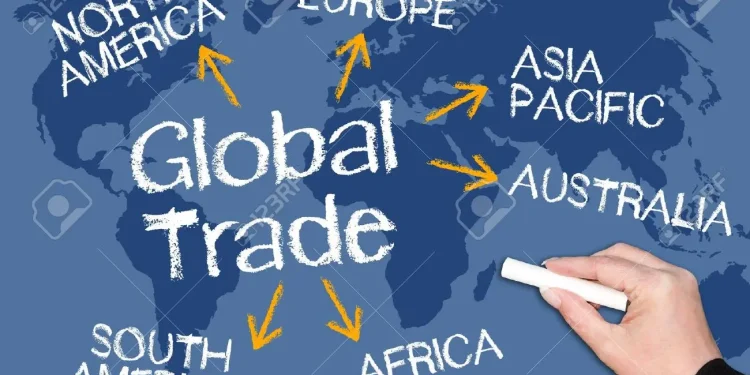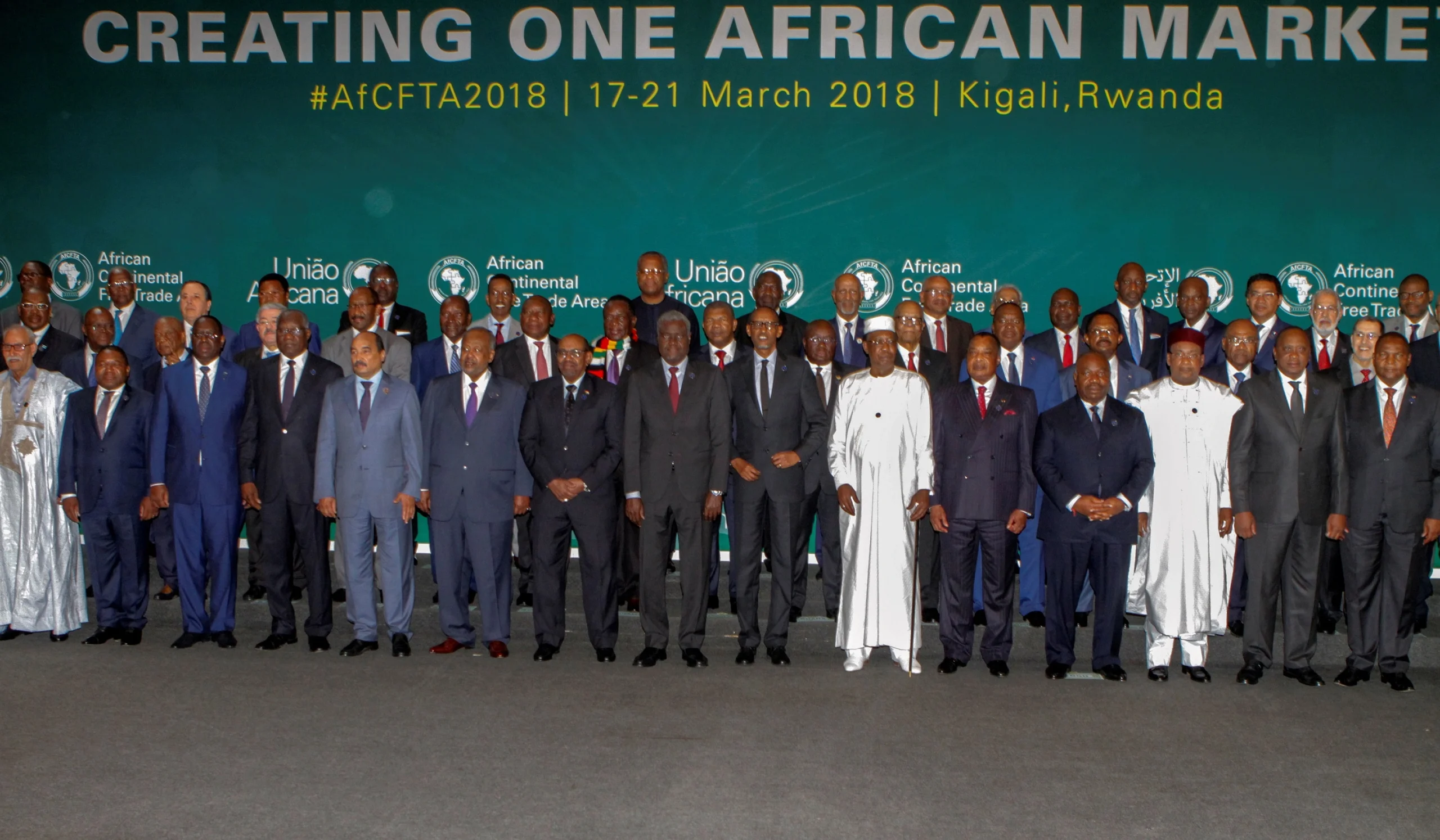
Our Projects are
Transforming African Trade
Quick Contacts
2nd Floor, Fidelity Insurance Centre Waiyaki Way, Westlands

Increased intra-African trade is an effective option to pave the way for post-Covid-19 economic recovery and food security.
The health and economic implications of the COVID-19 pandemic dramatically raised the number of individuals living in severe poverty in Africa. In 2010, Africa’s extreme poverty threshold was 40.2 per cent, with a poverty level of US$1.90 daily in purchasing power parity, and it had dropped to 34.1 per cent by 2019.
Nonetheless, this percentage drop in poverty incidence was insufficient to lower the overall number of poor individuals. Given the growth in population size, the number of individuals living in severe poverty in Africa grew from 408 million to 442 million between 2010 and 2019.
The economic and health implications of the COVID-19 pandemic forced 27 million more people into extreme poverty in Africa in 2020 compared to 2019 and almost 51 million compared to the pre-COVID-19 period.
The COVID-19 epidemic threw Africa’s growth trajectory off course. The epidemic had a significant socioeconomic toll, threatening the existence of half of the continent’s micro, small, and medium-sized companies (MSMEs). Four out of every five African enterprises saw a significant drop in revenue.
As African nations relaunched their economies and phased away COVID-19 limitations, the repercussions of the Ukraine crisis became apparent. The consequences are especially severe regarding food security, considering the continent’s dependence on food imports from the war zone.
Furthermore, increased fertilizer costs and the effects of climate change are worsening food shortages. These shocks have hampered progress toward SDG2, which calls for eliminating hunger by 2030.
Due to nations’ present severe economic realities, the International Monetary Fund (IMF) is pressing governments throughout the globe to subsidize the cost of food and electricity for their poor. A social intervention of this magnitude poses a significant budgetary issue for many African nations.
Increased intra-African trade is an effective option to pave the way for post-Covid-19 economic recovery and food security. Africa has enough food to keep its population from going hungry; the difficulty is determining how to guarantee that trade contributes meaningfully to food security.
Agricultural markets must be linked, producer incentives in surplus zones maintained, and cross-border trade increased to guarantee food supply and reduce price volatility.
African nations must use the opportunity to boost intra-regional trade and increase measures for the smooth movement of products and services and food sufficiency. To assist in achieving these objectives.
African nations have attempted to unilaterally liberalize trade and participate in free trade and regional integration agreements. Consequently, International commercial integration has significantly grown in Africa over the last several decades.
Africa accounts for just 2% of global exports. Moreover, trade between African nations rarely tops 10% of overall African trade. This percentage is much less than the intra-regional trade share of other continents.
The structural roots of Africa’s ‘under-trading’ are profound: Africa’s tiny economic size, the huge distances that divide them, and the specialization in natural resources that they can only acquire in limited amounts from one other.
Over the last two decades, intra-continental agricultural exports have gradually increased. Regional characteristics such as physical proximity, cultural similarities, historical commercial links, and preferential trade agreements influence Intra-regional trade in Africa. However, the present policy and non-policy trade restrictions will likely discourage exchanges among African nations.
However, trade happens mostly within localized economic groups. This emanates from Africa’s failure to build a strategic network of regional supply chains.
Furthermore, intra-continental agricultural trade in Africa is less diverse than in Europe. However, it is substantially more diverse than in South Asia. Intra-continental trade development may capitalize on regional disparities in African nations’ competitiveness in critical food value chains.
Nonetheless, the current rate of intra-African trade growth remains slow. This situation triggered a recent pledge by African heads of state to triple intra-continental agricultural trade by 2025. The leaders also expressed concern about Africa’s ability to improve food security via regional supply chains and increased intra-African trade.

Nations launched the AfCFTA as one of the actions made to support more extensive intra-African trade. The AfCFTA aspires to establish a unified continental market for goods and services. The agreement seeks to harmonise the continent’s various trade liberalization procedures and promote regional integration. Each African nation is a member of at least one of the continent’s approximately 30 bilateral or regional trade agreements.
Africa suffers from marginalization in the global trade system. Nevertheless, the African Regional Trade Agreements heralded a new age of economic integration with significant trade creation impacts. The path to free trade poses several significant obstacles and concerns that African governments must solve.
Africa has seen increased MSMEs’ activities, assistance from business-support organizations, and solid legislative frameworks. As a result, the AfCFTA will possibly expand intra-African trade in products and services by up to 25% by 2040,
Over the next 5 to 15 years, the trade agreement will erase at least 90% of tariff lines on African commodities. Sorting tariff challenges would benefit enterprises, particularly those involved in intra-African agricultural commerce.
The average tariff on agricultural goods sold between African nations currently stands at 17.1%, while exports to Organization for Economic Cooperation and Development (OECD) countries are 15%. With the AfCFTA, intra-African agricultural and food exports will rise by 20 to 35 per cent by 2040.
The AfCFTA will encourage increased agriculture and food sector engagement in complex global value chain trade by increasing both forward and backward participation. As a result of the AfCFTA, nations’ dependency on the export of agricultural intermediates to create higher-value-added final commodities would reduce.
AfCFTA will cause an increase in value-added for food exports and an increase in the value of intermediate inputs from foreign and other sectors. As a result, the AfCFTA would result in an overall net gain in food exports for Africa.
This gain suggests that most of the value generated in food exports would come from other domestic industries. That change would illustrate the AfCFTA’s integration impact even further. In other words, in evaluating the money earned inside each sector (value added) rather than merely accounting for overall exports, the continental agreement results in more broadly distributed advantages across various sectors.
Read original article
Disclaimer: The views and opinions expressed in this article are those of the authors and do not necessarily reflect the official policy or position of TradeMark Africa.